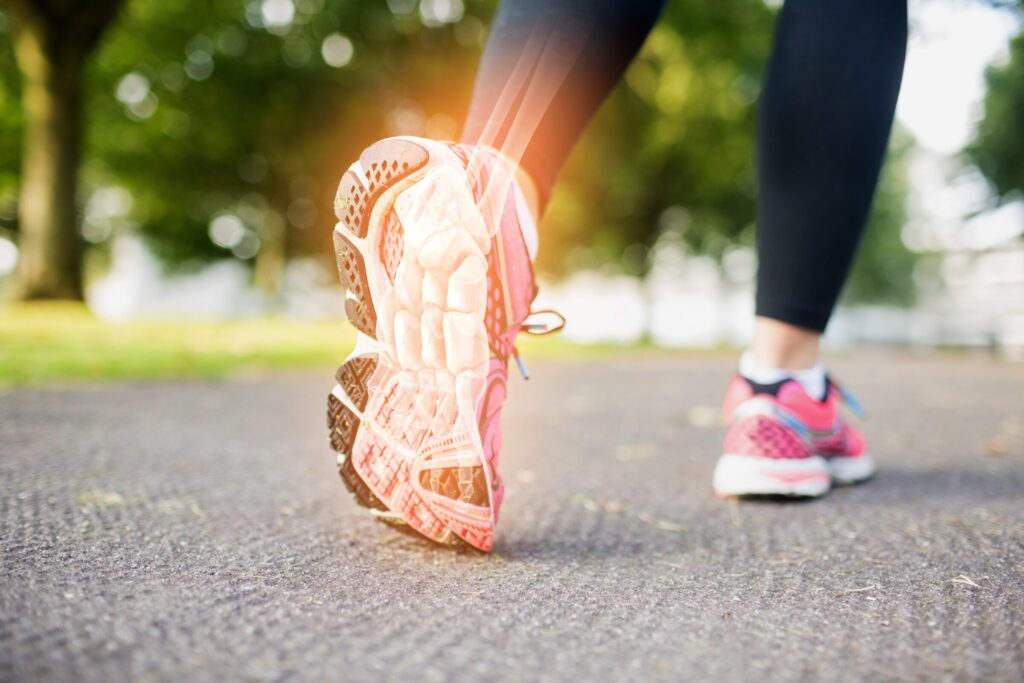Have you got Foot, Knee or Leg pain?
A Biomechanical Assessment Could Help You!
Do you have pain in your feet, knees or just your legs in general?
Is it something you’ve meant to get checked but never got around to?
Don’t worry, our podiatrists are experts in lower limb biomechanics – i.e. the way we move and walk.
We can help get you walking or running pain free once again.
What Exactly Is A Biomechanical Assessment?
A Biomechanical Assessment is where a Podiatrist will examine the movement of the joints, bones and muscles and how they are affecting the way you walk , run or your posture.
Your podiatrist will examine your pelvis, legs, knees and feet, assessing the relationship between them to get an accurate idea as to where your pain is coming from.
What Can I Expect During A Biomechanical Assessment?
A Few Questions About Yourself…
The first thing we would do is find out more about you…
- What kind of pain are you having?
- Did something happen or did the pain gradually come over time?
- How long has your pain been going on for?
- Have you ever had this type of pain before?
We like to take a full detailed history as it is vital for us to know before making a diagnosis.
Footwear Assessment
Your podiatrist will then assess your shoes, their wear patterns (are they worn away in a particular part of your shoe?) and ask you questions about them such as:
- What shoes do you wear most often?
- Is your footwear a choice or a necessity?
- Do you choose to wear high heels, causing ball of foot pain?
- Can you limit or avoid wearing these shoes, even for a short period of time to allow healing?
Your podiatrist will then be able to advise you on footwear and the best type for you.
What Else Happens During A Biomechanical Assessment?
During the Biomechanical Assessment your podiatrist will perform a range of different tests depending on the kind of issue/pain you are having. Some of the tests are as follows:
- Joint assessment – checks the range of motion of the joints in the lower limb and feet.
- Static assessment – evaluates foot posture and alignment in a relaxed position when standing.
- A Gait Analysis and Video Playback– which assesses the way you walk, to determine biomechanical or structural abnormalities in the lower limbs.
- Pronation (fallen arches – ankle rolling inwards movement) and supination (walking on the outside of the feet) are evident at this stage.
- Muscle strength – tests muscle tone, strength and tightness.
- Leg length measurement- checks for a leg length discrepancy
What Happens Next?
Your Podiatrist will give you a full diagnosis, the reasons why you are experiencing the pain you have, what’s causing it and what needs to happen next to get you back to doing what you love. You will get a written action plan of what treatment is needed for you. The treatment recommended varies depending on the issue/pain that you are experiencing. Some examples of the treatments you may be recommended could be:
1) An at Home Exercise Plan-Your podiatrist will explain and demonstrate the exercises advised as part of a stretching/strengthening programme. This is a crucial step in becoming pain free, especially if muscle tightness or weakness is noted during the assessment.
2) Footwear Advice-Your podiatrist may provide you with advice on good properties of footwear and what styles/brands to look out for when buying your next pair of shoes. Equally, they would inform you what you should avoid e.g. over-flexible, thin soles. An expensive shoe does not mean it is good for your feet!
3) Dry Needling-Dry needling is a therapeutic approach in which fine filament needles are inserted into specific points on the body to relieve pain and improve function. The needles used are the same as acupuncture needles but a different treatment technique is used.
4) Joint Mobilisation-Joint mobilisation is the careful use of skilled graded forces to move a joint in a desired direction. Unlike stretching of a muscle, joint mobilisation is specific to the capsule of the joint itself. Gliding of the joint is usually used to improve motion and normalise joint function. Joint mobilisation also has the added benefit of controlling pain.
5) Shockwave Therapy – Shockwave therapy is a non-invasive treatment that uses high-energy sound waves to stimulate healing in injured tissues. It’s commonly used to treat chronic heel pain, plantar fasciitis, and Achilles tendinopathy. This quick, effective therapy helps reduce pain and restore mobility without the need for injections or surgery.
6) Padding and Strapping- This is the fabrication and application of different types of materials (foams, felts, silicone, tape) to the foot to help alleviate pain and or offload pressure and tension on various parts of the foot.
7) Custom Made Foot Orthoses
We use 3D Video Motion Gait Analyses to allow us to examine every part of your gait in detail no matter how fast you move.
We are one of the few clinics in Ireland to use both 3D scanning equipment like they have on the space station and our 3D Printed Orthotics when needed to get you back in action.
How Do I Prepare For The Appointment?
The Biomechanical assessment takes 1 hour.
We would recommend you to bring samples of your footwear (work shoes, football boots, dancing shoes, runners etc.) and to wear either loose fitting pants that can be rolled above the knee or a pair of shorts.
If you do have any Xrays or MRI reports you could bring them along also.
Other than that leave the rest to us.
Get all the answers you need and get back to living your life to the full.

